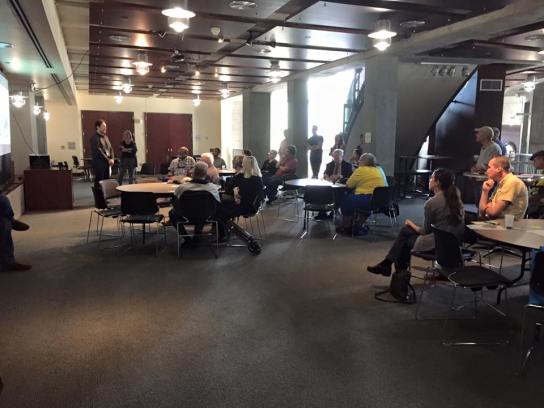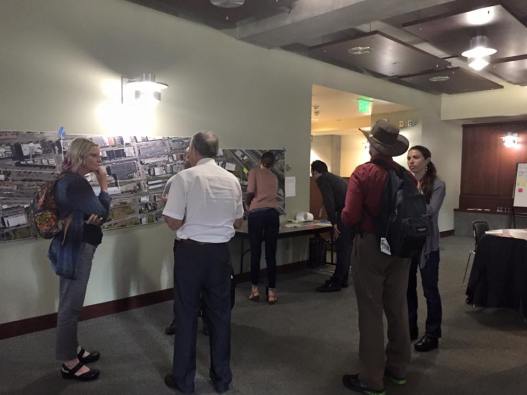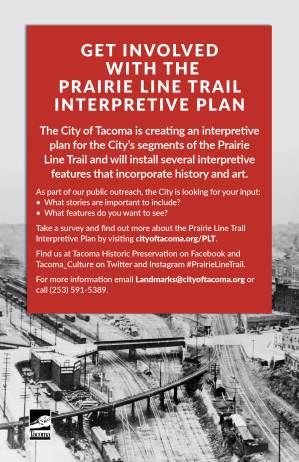When those traveling to Tacoma by train arrived, Nihonmachi was the first neighborhood they would see. Pictured below is an extraordinary document from an exceptionally rare source[1]. This hand-drawn map produced by Kazuo Ito shows the extent of Tacoma’s Nihonmachi, or Japantown, around 1920. The individual listings show Japanese operated businesses, many of which also served as family homes for the 1700 residents of Japanese ancestry living in downtown Tacoma[2]. These were the townies—the merchants, innkeepers, restaurateurs, grocers, teachers, barbers, tailors, photographers, doctors, mechanics, apothecaries, florists, bankers, porters, and artists who made up Tacoma’s thriving Japantown.
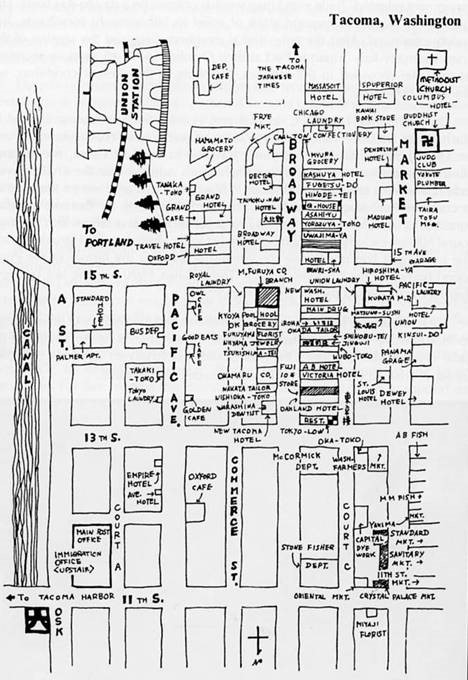
In fact, Tacoma had one of the largest Nihonmachi in America per capita, with population reaching its peak in the 1920s[3]. Japantown was anchored by the grocery stalls and restaurants around the public markets between 11th and 13th on Market Street to the North and the many hotels clustered near Union Station on the South. In between, a busy neighborhood went about its daily routines, morning delivery wagons, kids to school, businesses opening with the turn of a key and the flip of a sign, lunchtime rush at the cafes, the early afternoon papers arriving, grocery shopping and street-side visiting, after school sports and language school, travelers wandering into the barber shops and hotel lobbies from the evening trains at Union Station, then the lights of the restaurants and clubs take over the streets and the shopkeepers close up shop and head upstairs for dinner with the family.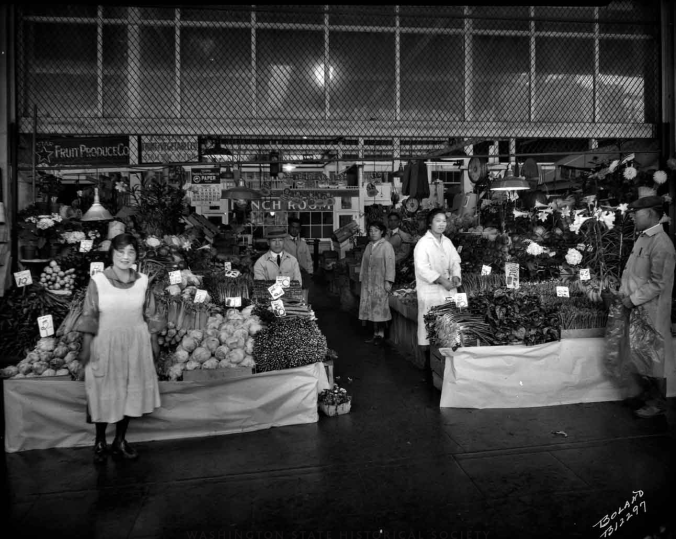
Tommy’s stall at Tacoma Crystal Market at 11th and Market st. Courtesy of the WSHS Collection.
Joe Kosai, who grew up in his family’s hotel on Pacific Avenue and later taught math for Tacoma Public Schools, remembered going down to the theater district all by himself on Saturday mornings, getting help from the usher into his seat where his knees didn’t bend and his sneakers poked out into the aisle, and then watching cartoons, cowboy movies, and sci-fi serials until his eyes and neck hurt from looking up at the giant screen. He was six.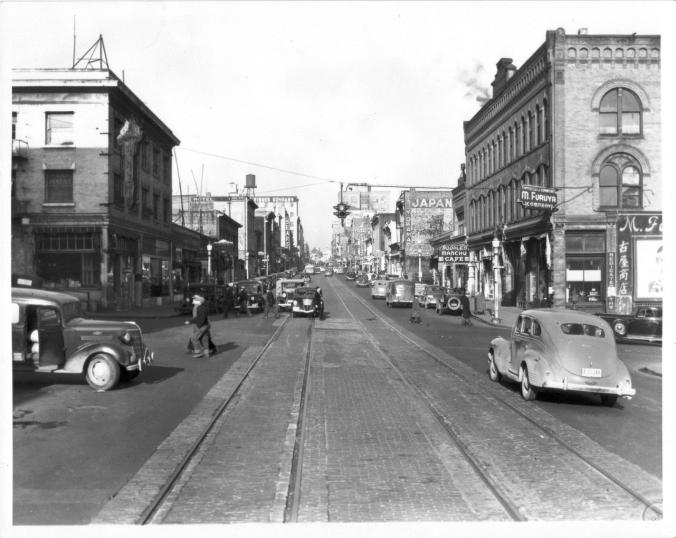
Japantown at 13th and Broadway, c. 1940; Image courtesy of Densho’s Magden Collection.
For the full story and more images, check out Michael Sullivan’s blog! Content courtesy of Michael Sullivan, edited by Alaria Sacco.
[1] Ito, Kazuo. Issei, A History of Japanese Immigrants in North America, translated by Shinichiro Nakamura and Jean S Gerard. 1973. Published by Japanese Community services, Seattle, WA. LOCCC No. 73-82678
[2] 1920 U.S. Census Records
[3] Ibid. & Magden, Ronald E. Furusato, Tacoma-Pierce County Japanese. 1998. A project of Nikkeijinkai: Tacoma Japanese Community Service. LOCCC No. 98-149650. ISBN 0-9629616-4-7




